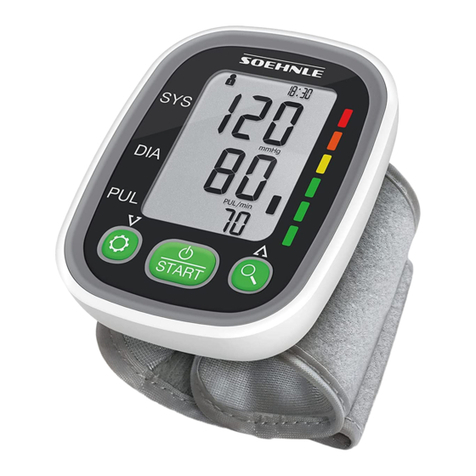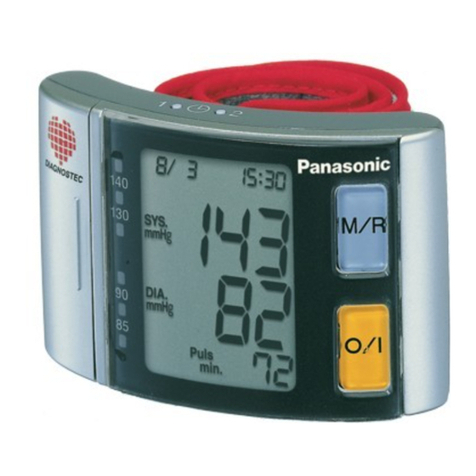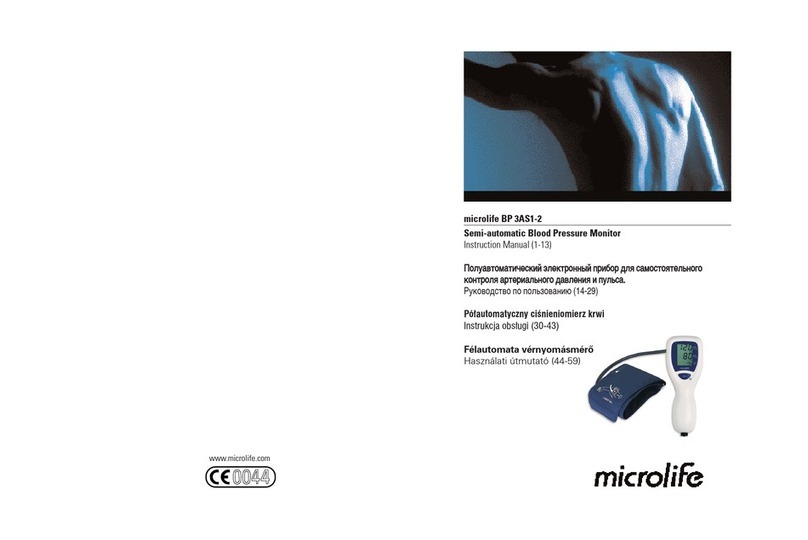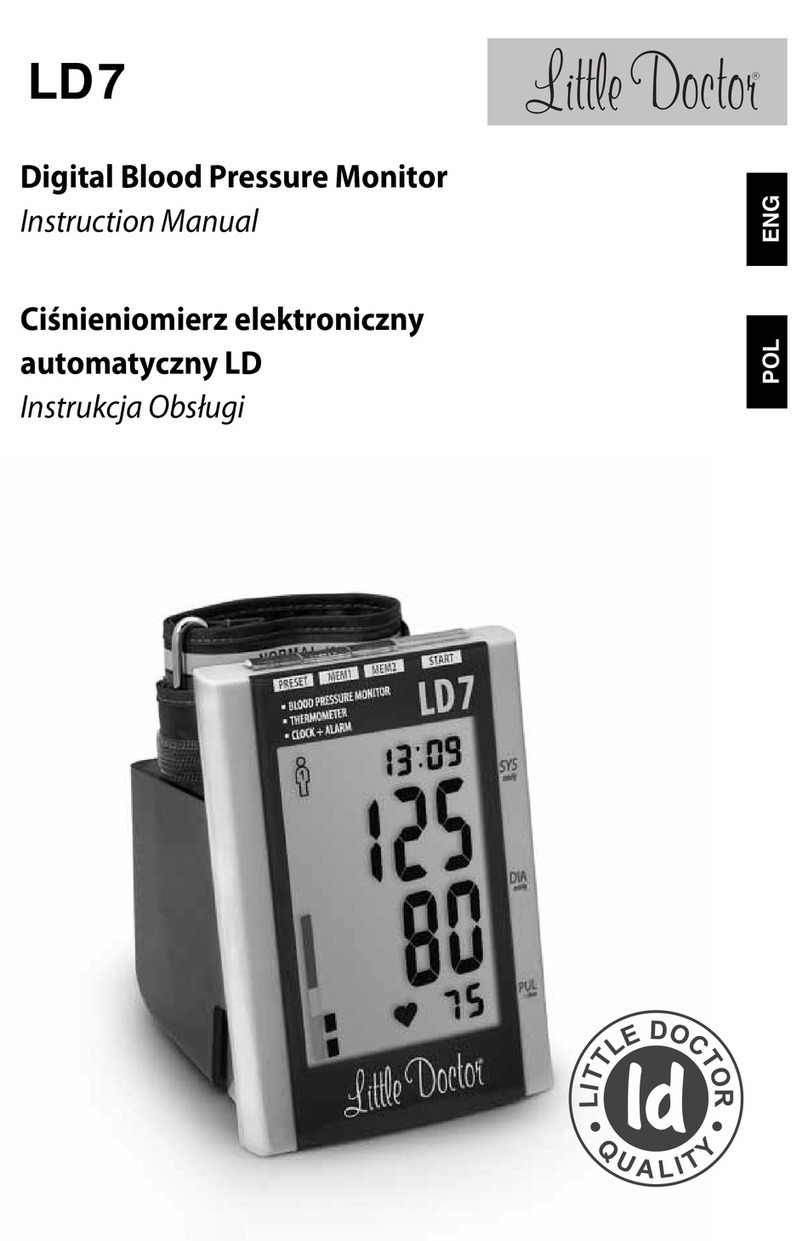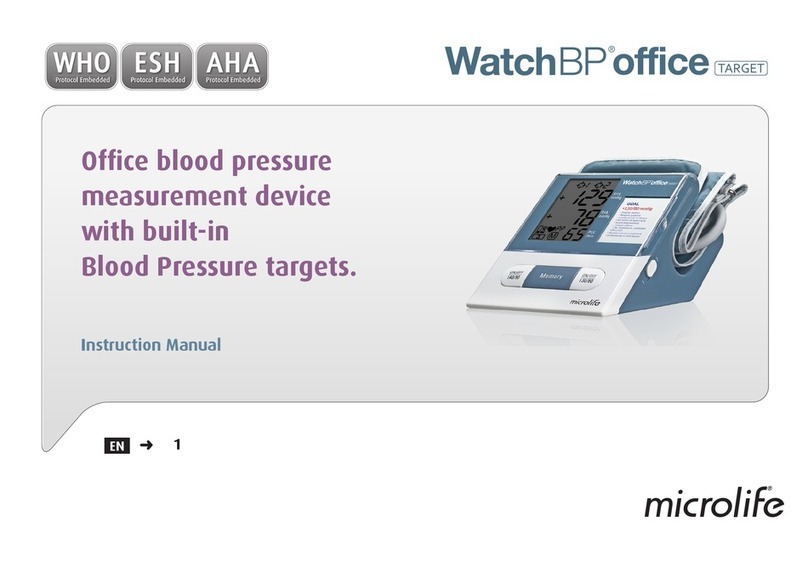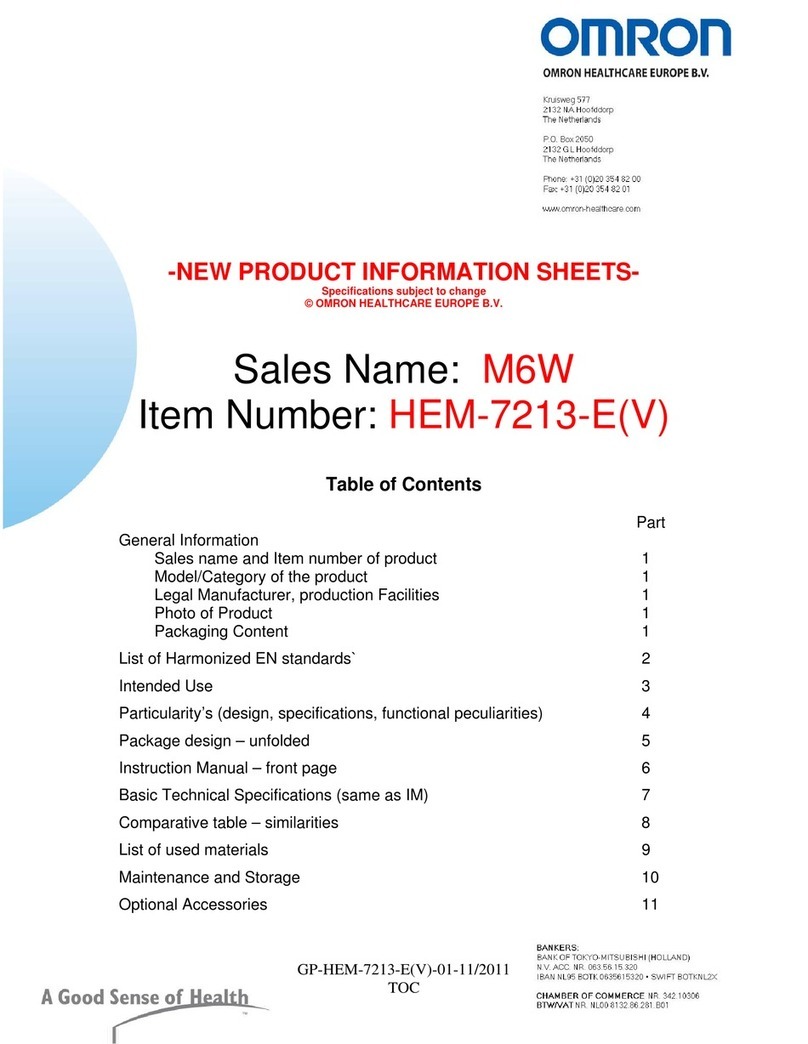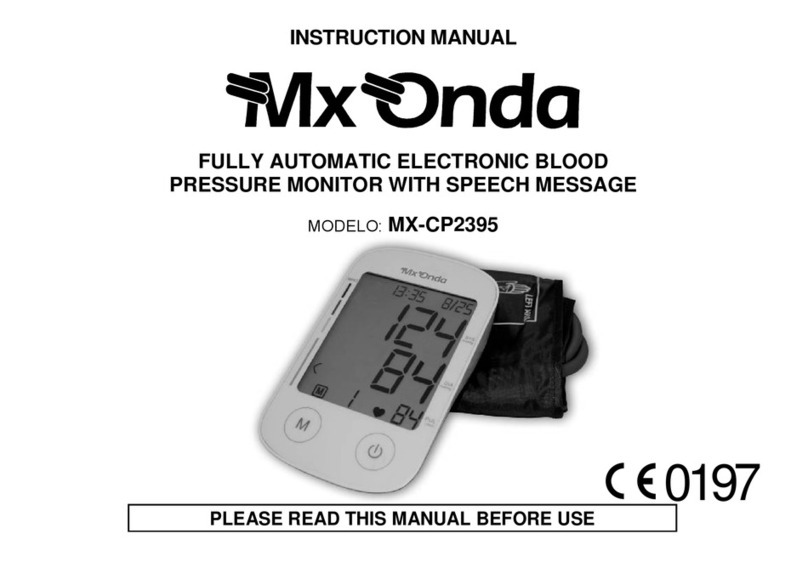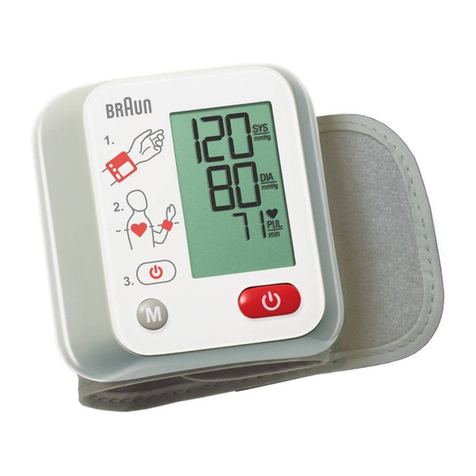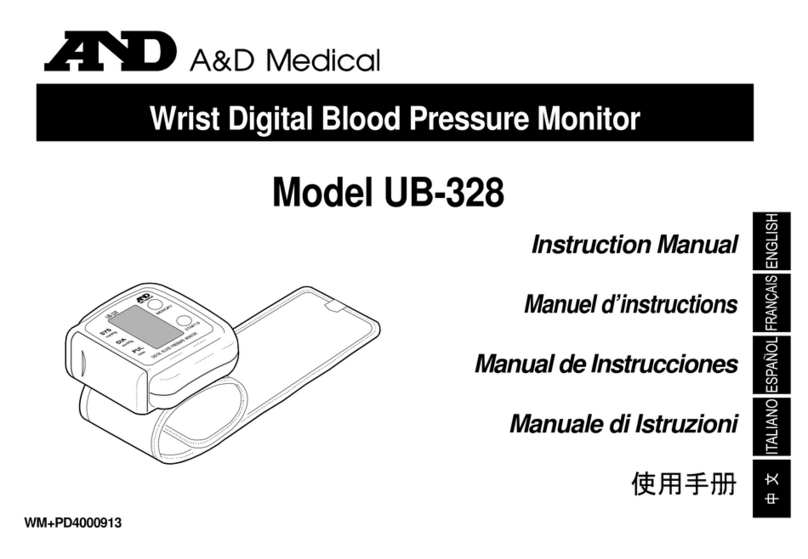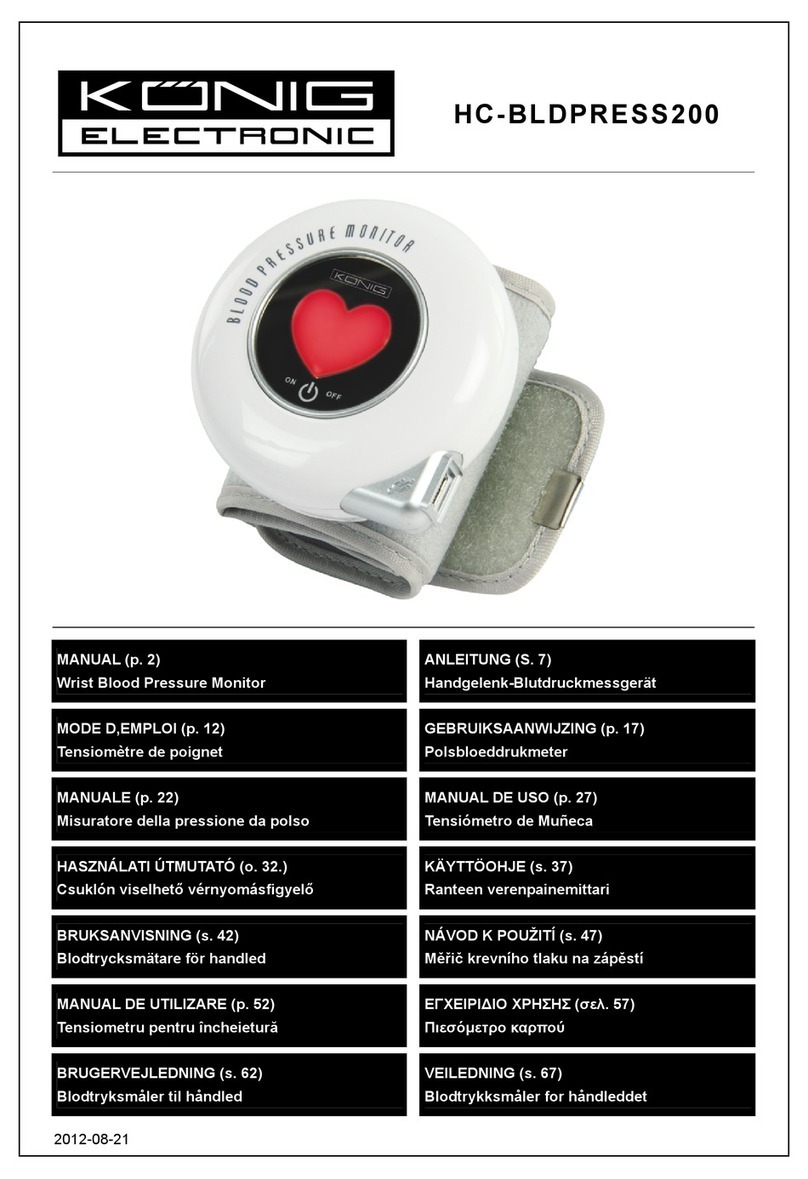
6
Safety Information (cont.)
• When measuring, avoid compressing or
restricting the air hose. Do not kink the air
hose during use. The cuff pressure may
continue to increase which can prevent
blood ow and result in harmful injury to the
patient.
• People with severe blood ow problems or
blood disorders should consult a physician
before using the monitor, as the arm cuff
ination can cause bruising.
• Do not take measurements more than
necessary. It may cause bruising due to
blood ow interference.
Caution: Indicates a potentially hazardous
situation which, if not avoided, may result
in minor or moderate injury to the user or
patient, or damage to the equipment or other
property.
• Too frequent and consecutive
measurements could cause disturbances in
blood circulation and injuries.
• Do not use the monitor for any purpose
other than measuring blood pressure.
• Only use the approved arm cuff for this
monitor. Use of third-party arm cuffs may
result in incorrect measurements.
• When not in use, store the monitor with the
charging cable in a dry room and protect
it against any chemical solvent, moisture,
heat, lint, dust, and direct sunlight. Do not
store in any place that is tilted, vibrates, or
can damage the monitor. Do not store near
chemicals or corrosive gases. Never place
any heavy objects on the storage case.
• Only use, transport, and store the monitor
within the required temperature and humidity
ranges (see page 3). If the temperature
and humidity are outside these ranges, the
measurement results may be inaccurate.


